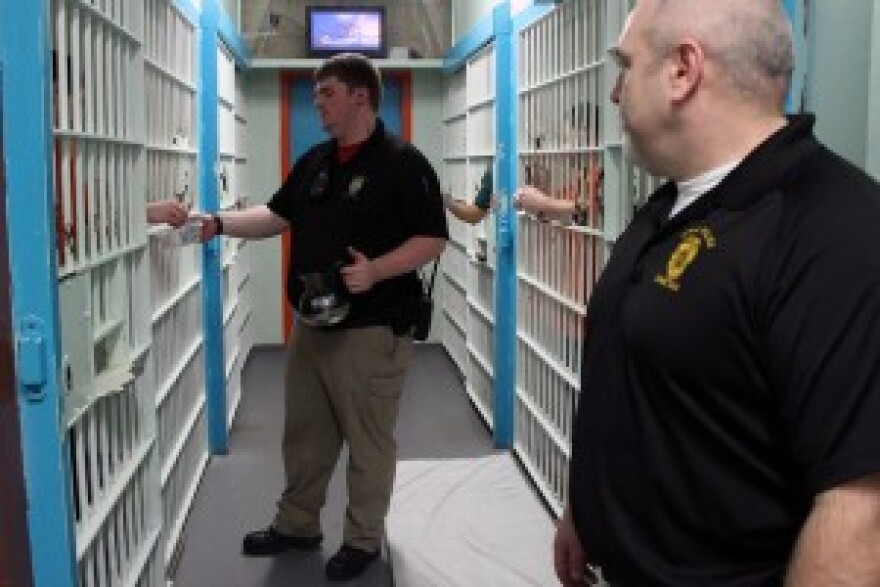At any given time over a quarter of the beds in Alaska prisons are occupied by people who haven’t been convicted of a crime. That’s according to the Alaska Judicial Council. That may change in the coming months as a result of one piece of 2016’s Senate Bill 91 that establishes pretrial services.
Geri Fox is in charge of developing Alaska’s new pretrial program, part of which is an assessment tool that will be used to determine if someone awaits trial in prison or in the community. She says "It measures the likelihood of an individual committing a new criminal event between the time they are arrested and their case is disposed of. … The other thing our tool will measure is whether or not you are likely to fail to appear in a future court hearing between arrest and disposition of your case."
It’s basically using statistics in place of human judgment to assess risk. Fox likened it to car insurance: "If you are low risk, we want to help you stay out in the community, and here’s why … most people that are in jail for more than three days end up losing things like a job, an important significant other in their life, their apartment. And as those things begin to unravel, they become more desperate, and so what happens is we actually increase the crime rate."
Joshua Quintal, like many in Juneau and Douglas, is worried about the upcoming releases. Quintal was arrested for multiple property crimes about two years ago. Unable to afford his $75,000 bail, he sat in Lemon Creek Correctional Center for three months. Quiatal said, "It was rough on me, but … it gave me time to find out what was important to me. So I’m not going to say that sitting there in jail wasn’t good for me. I think it probably was."
If it weren’t for his wife, Brianna Heller, who agreed to be his custodian for nine months, he would have been in for much longer. Heller said she’s glad her husband got out, but she knows that many in Juneau do not have the same support they had to make it work.
Heller adds, "I think a lot of people are almost relieved to be in jail, believe it or not, because they don’t have to hustle anymore. There is a huge, huge amount of people that are like the “undesirables,” and it really kind of sucks for them that jail is almost a better option because they’ll have a shower, or they’ll be fed…"
Quintal has a lengthy criminal history going back to age 14, when he says his drug addiction began.
Fox said that criminal history will likely be a factor in the new assessment, "One of the most likely pieces of the tool will be what does your criminal pattern look like? For example, have you committed three crimes in five years or eight crimes in five years? So the density or your involvement in the criminal justice system matter."
In addition to the new assessment tool, pretrial defendants will be monitored through in-person visits and ankle monitors. Minus a few exceptions, this is something that hasn’t been done before, even for those currently out on bail. She also said connecting people to treatment, especially those with addiction, will be crucial to the program’s success. The new tool will be piloted in September. Fox said they’ll do about 8,000 assessments before full implementation in January.

